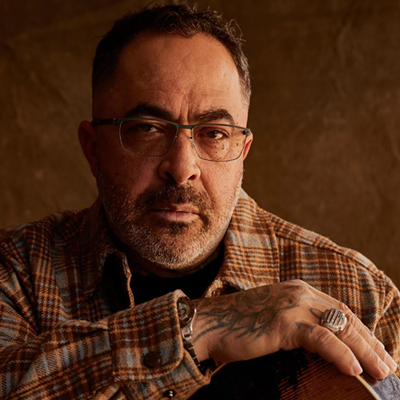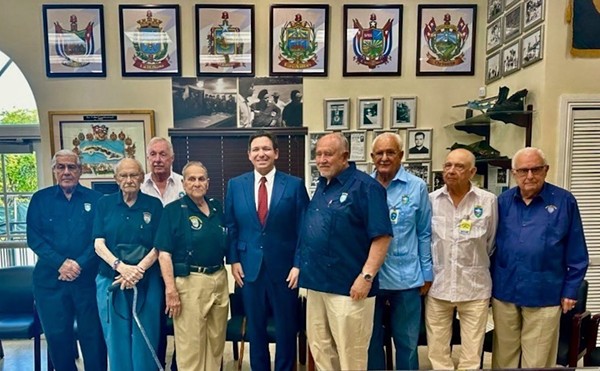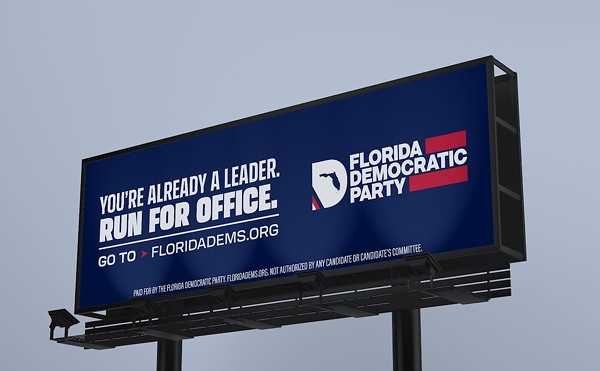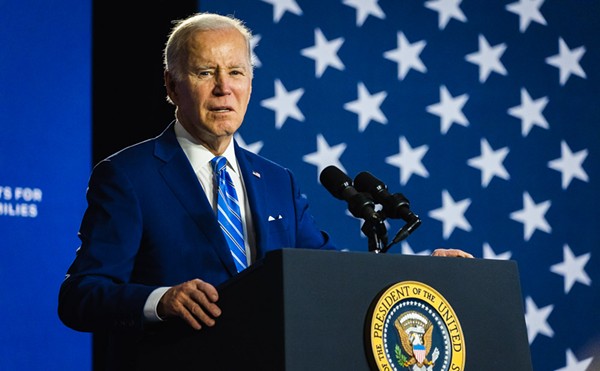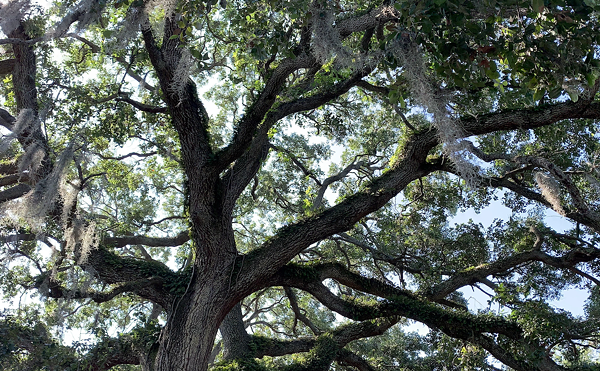
If you’re a regular driver in Hillsborough or Pinellas, you probably see it at least once a week.
You’re moving at a reasonable speed down a major thoroughfare. A pedestrian steps out into the street in front of you, casually traversing your lane as you approach, even though there’s not a crosswalk in sight. You have to brake or swerve to avoid hitting him or her. Your heart pounds as you think about what could have happened, glad you’re not the sort to glance at your phone while in motion, glad it wasn’t too dark to see the person step out into traffic.
But many drivers, walkers and cyclists throughout the region aren’t so lucky.
Hillsborough County isn’t just on pace in 2015 for the highest number of pedestrian and cyclist deaths in recent memory if not of all time; it has already reached that number. As of this writing, 53 people have been killed this year trying to navigate Hillsborough County without a car, and scores more have been injured. At a recent Tampa City Council meeting, Police Lt. Richard Mills said he’s worried the number will go up before the year is through.
“Unfortunately December is the holiday season, so there’s going to be a lot more people in the Tampa Bay area,” Mills said.
In Pinellas County, pedestrian deaths have topped 32 so far in 2015; last year saw a freak spike with 41 in all.
The October death of 17-year-old Chamberlain High School student Alexis Miranda, who was hit while trying to cross Busch Boulevard, lent momentum to efforts to prevent such incidents.
“We say we want to have zero deaths in our city,” Randy Umbs, chief highway safety engineer for the Federal Highway Administration, recently told Tampa City Council. “Therefore we’re going to rally the forces and we’re going to concentrate on that.”
In 2014, the National Complete Streets Coalition ranked the Tampa/St. Petersburg/Clearwater metro area second in pedestrian deaths nationwide, trailing only the Orlando area.
“The reasons for our city and our state having a high number of fatalities is, one, the weather, because more people are out on the roads biking and walking more days of the year than other places, and that our roads were engineered to get people as fast as possible through the roadways to their destination,” said Tampa City Councilwoman Lisa Montelione.
But that’s only part of the story, she said, which is why she sought to bring the issue to her colleagues’ attention.
Activists and planners at county Metropolitan Planning Organizations are struggling to find ways to protect those who, by choice or otherwise, go about their day without the aid of a car.
“We’ve developed these plans… to try to figure out where we need more sidewalks and more bike lanes,” said Gena Torres, a planning manager with the Hillsborough MPO. “We can see where the crashes are. We can also see where there are gaps.”
In Pinellas, trouble spots for pedestrians include Fourth Street North, Ulmerton Road, the intersection of Keane and East Bay and most of U.S. 19. In Hillsborough, the most dangerous areas include Fletcher Avenue, Dale Mabry Highway and Brandon Boulevard.
The City of Tampa recently converted Fletcher, an area packed with USF students and low-income residents, into a “Complete Street” — lowering the speed limit, installing more flashing crosswalks and creating safer bike lanes. The city is doing the same on Bayshore Boulevard as well as MacDill, Swann and Palm avenues.
The impact has yet to be quantified. But other efforts to protect pedestrians, like flashing crosswalks along Gulf Boulevard, on the Pinellas beaches and bike trails, have failed to budge the needle permanently downward.
According to Pinellas MPO planner Al Bartolotta, colleagues at a recent event commemorating the construction of the Pinellas Trail were lamenting the fact that, despite the trail’s popularity, the number of pedestrians and cyclists killed and injured on area roads remains high.
“Everybody’s still kind of tired of seeing the same crash numbers,” he said. “I think everybody was still recognizing we’ve got a long way to go to make our streets safer.”
The problem, at least in part, is that much of the area’s infrastructure was built with little regard for non-drivers: roads six or eight lanes wide, narrow or nonexistent bike lanes, high speed limits, few crosswalks.
“Over the years, those things have gotten better as far as being built,” Torres said. “[Bike lanes] should have been built with the roads… but we sprawled out, and really Florida in general is built like a big sprawl.”
That means someone who has to catch a bus at a stop on Ulmerton may have to negotiate eight lanes of traffic in places, and the distance between crosswalks is forbiddingly wide.
The victims tend to be middle-aged, low-income men, often heading to or from work at night and crossing the street mid-block.
“We have a pretty good network of sidewalks, but where people are getting hurt is when they cross the roads,” Torres said. “There might be a mile between [crosswalks], even in a major city, on a major [four- or six-lane road]… It’s hot, your destination is across the street. You’re not going to go half a mile up to the light and walk back.”
As for cyclists, accidents often occur when they’re riding the wrong way. They’re supposed to go with traffic, and many ride against. They’re most likely to get hurt while riding against traffic on the sidewalk, according to Pinellas MPO statistics.
“It’s amazing, how many times, even when there’s a bike lane, you see people going in the wrong direction,” Bartolotta said. “And that’s really dangerous.”
Of course, most incidents also occur because one or both parties simply isn’t paying attention.
“People have got to wake up, they’ve got to stop texting and talking and combing their hair when they are driving,” said Tampa City Councilman Harry Cohen. “They need to look when they’re crossing the street, and they need to start paying attention.”
A few efforts are underway locally to bring down the number of pedestrian injuries and deaths.
Tampa is launching its version of Vision Zero, a global initiative that has led to significant decreases in fatalities around the U.S. and the world, thanks to education as well as upgrades to infrastructure. During his presentation to Tampa City Council, FHA’s Umbs noted that the pedestrian fatality rates in Sweden, Germany, France and Spain have seen anywhere from a 30 to 50 percent decrease. Closer to home, Minnesota, Utah and Washington have had 43, 48 and 40 percent reductions since implementing their own versions of Vision Zero. New York, Los Angeles and Austin recently adopted similar plans.
Walk-Bike Tampa, an effort launched by Tampa mothers Hannah Strom and Jackie Toledo, is helping to carry out the plan.
“Our vision is that any person at any address in Tampa, any age, any ability, can safely, safely walk from one address to another, or bicycle,” said Christina Costa, a spokesperson for the effort. “Tampa can’t be this great city where we’re number 10 for bicycle-friendly businesses and also the city that rates so poorly for walking and biking safety. Those are two opposed Tampas. So we want to be in the Tampa that actively protects the most vulnerable of our citizens.”
It’ll have to be a multifaceted effort, involving government agencies and nonprofits.
“It’s not even something that needs to be put out there for the community to embrace,” Strom said. “This is really organic.”
In Pinellas, there’s no organized effort underway that parallels Tampa’s, but city and county officials are constantly looking at ways to make it safer for pedestrians to get around. There are more lighted crosswalks than there were before (even if not everyone uses them) and every time the county or state makes improvements to a roadway they’ll include bike lanes. Elevating areas of major roadways, as is being done along parts of U.S. 19, is also helping, Bartolotta said.
Officials admit that getting pedestrian deaths to zero is a tall order, but vow not to lose focus as they move forward. Umbs compares the task to the fight against disease.
“We eradicated polio,” he said, “because we went after it with a lot of effort and a lot of focus in bringing the experts together.”


